By Will Dabbs, MD
Machine guns have gotten absurdly expensive. It is almost crazy to spend as much on a gun as you might dump on a five-year note for a decent new car. At least that is what my wife, who is indeed a sensible lass, tells me. With that being so, what is a self-respecting high-speed gun addict to do?
When compared to machine guns, short-barreled shotguns are the next best things. They carry that same special cool ambience without breaking the bank or requiring an armed escort whenever they are displayed in public. There is a wide variety available to the shooting public ranging from the fairly pedestrian chopped Remington 870 to the way-cool Tromix micro Saiga 12 gauge. Chunking birdshot downrange, however, loses its allure in fairly short order. As an avid shooter, I knew there must be something better.
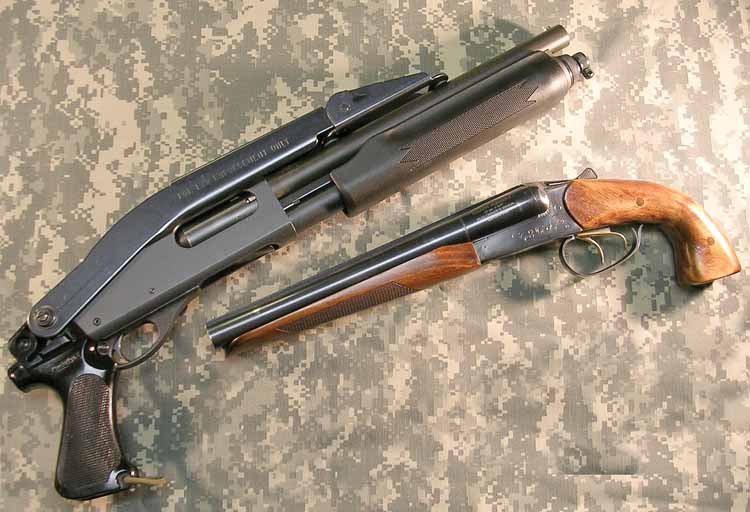
We have all seen those displays at gun shows wherein some guy is hawking “Special Purpose” shotgun rounds. They come in an astounding variety of flavors and generally run about ten bucks for three rounds mounted on a flashy card. This set the gears in motion and I have subsequently found that, for a fairly minimal cash outlay, one can whip up some of the most remarkable shotgun fodder at home.
Now be forewarned, handloading exotic ammunition is a dark and murky thing fraught with danger for those who fail to respect it. Loads should always be worked up conservatively and with the utmost caution. Start at the lowest end of powder loads and payload and never push the design envelope of the weapons involved. In the case of short-barreled shotguns, recoil management is a major consideration so short-loaded, low-recoil, low-pressure rounds are the fare of the day.
The basic Lee shotgun reloading press is a marvel of low-cost engineering simplicity. Still made in America, this basic Lee press can be had for about $40 and comes complete with essentially everything the low volume hobby shotgun reloader needs to kill countless blissful hours loading weird and exotic shotgun ammo. (Of course, one can still spend more money to purchase a higher volume or better quality press, but this unit does quite well for low-volume, custome shells.) The press is made of steel, plastic, and aluminum and, while not exactly built like a battleship, is more than adequate to render years of trouble-free service to the handloader who does not abuse his equipment. Powder and shot charges are determined via handy little plastic bushings that are readily interchangeable. A wide variety of bushing sizes is included with the press. While a powder scale is useful to verify charge weights, it is not really necessary so long as basic attention to safety is observed.
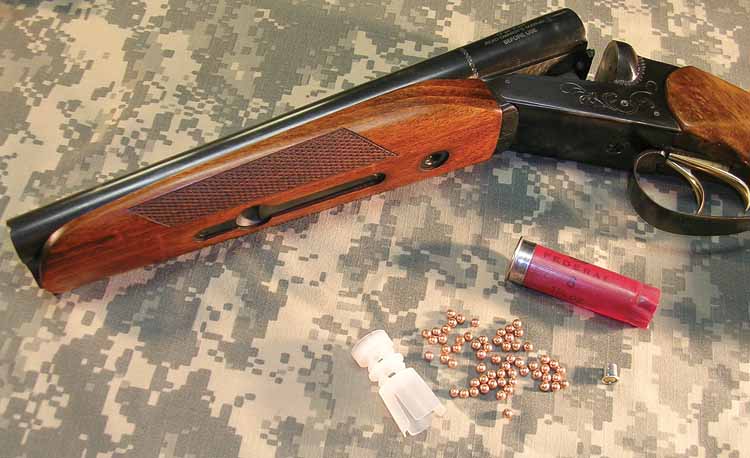
The only real downside with the Lee press is that it is messy to change shot and powder bushings. The front plate on the press must be removed via a pair of machine screws to swap out bushings and with the press rigidly mounted to the reloading bench a little powder and shot spill out every time despite efforts to the contrary. This is nothing a small hand broom cannot handle but it is a bit frustrating. For obvious reasons never use an electric vacuum cleaner to clean up gunpowder spills.
Loading shotgun rounds is undertaken via a five-step process. The first stage deprimes the spent shell and resizes the brass component via a clever steel sleeve that is forced down over the base of the shell during the press’ downward stroke. The second stage of the process effortlessly removes the sizing sleeve and primes the shell with a new primer. The third stage involves two strokes of the press and charges the shell with both powder and shot with a pause between the two to seat a wad. The fourth stage initiates the crimp with the fifth and final stage setting the crimp in place. The resulting product is crisp and sharp, easily passing for a factory load if attention to detail is retained throughout the process. If my kids help out with component management, I can easily load two boxes in twenty minutes even if I am loading a payload that must be manually emplaced outside the press. Loading simple shotshells using the press’ shot hopper makes the process go even faster. Considering your basic short-barreled shotgun lacks the prodigious ammunition appetite of a fully automatic submachine gun, an hour at the reloader will actually occupy a shooter for most of an afternoon turning gunpowder into noise on the range.
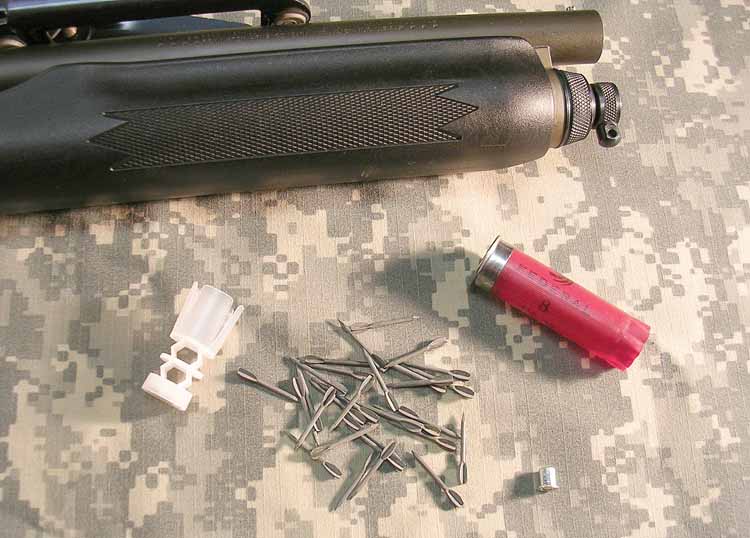
Flechettes have always had a mystique for fans of things that go “Boom.” Originally loaded into anti-personnel artillery rounds as well as 2.75 inch FFAR (Folding-Fin Aerial Rockets) fired from military helicopter gunships, these little darts were designed to be fired thousands at a time to saturate a target area. From an engineering perspective they are little more than finishing nails with pressed in fins where the nail head should be. They are commonly available in one-inch as well as inch-and-a-half versions from a variety of surplus sources. The one-inch versions fit nicely into a 12 gauge shell. A five-pound sack picked up from a Knob Creek vendor should provide for several years of recreational loading.
I load my flechettes fifty-fifty with half of the darts facing forward and half facing aft. When fired, the aft-facing darts rotate in the slipstream until they face forward, thereby dispersing the payload into a veritable swarm of sleek steel projectiles. At ranges beyond about fifteen meters most all of the darts will penetrate point first. A typical 12 gauge shotgun load carries about thirty of the one-inch versions. Each one-inch dart weighs about 7.6 grains. At fifteen meters the darts will sink past their fins in a live hickory tree. Even with underpowered, low-recoil loads, the darts will consistently penetrate eight inches or deeper into 10% ballistic ordnance gelatin. The minimal cross-section of the flechettes combined with their relatively dense construction combine to maintain their velocity past ranges that might render spherical shot ineffective. Flechette rounds can be loaded for less than a quarter apiece.
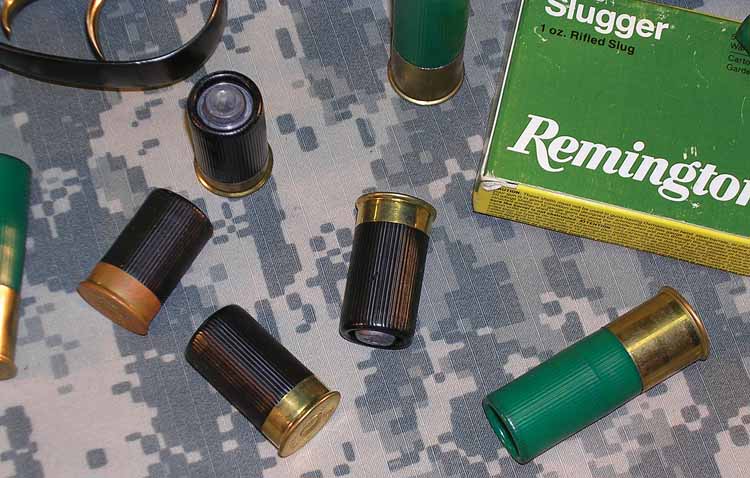
We have all heard stories of local farmers shooting trespassing young miscreants in the buttocks with home-rolled shotgun rounds loaded with rock salt. Where I currently reside there are significant numbers of semi-feral dogs that regularly wander through our farm in search of scraps or intimate encounters with the fairer members of my own dog collection. While not viewed as capital offenses worthy of lethal force, there does exist a sub-lethal means of persuading these wandering canine Casanovas into seeking female companionship elsewhere. A bit wary about firing salt through shotgun barrels, the solution was found in the intrepid Lee reloader and 6mm plastic Airsoft pellets.
This low-density plastic shot is available most any where today and do not carry enough energy to do any real damage beyond point blank range. Even the most amorous hound seeks affection elsewhere after a quick dusting of plastic BBs out of a 12 gauge. The recoil and report of these rounds being fired are trivial and the BBs penetrate no more than 3/4 inch in ballistic gelatin. For comparison purposes, a non-lethal law enforcement beanbag round fired through a 12 gauge will penetrate nearly three inches into the same medium.
Egg-shaped fishing sinkers connected with piano wire carry a certain cool factor as well. The guy selling them at the gun show calls them bolo rounds. This amalgam must be loaded carefully to facilitate dispersion upon firing but the results downrange can be quite impressive against targets such as tree trunks, water jugs, and pumpkins. When appropriately deployed the piano wire slices through a target like a razor blade. Their potential effects on more socially malevolent targets make one’s skin crawl.
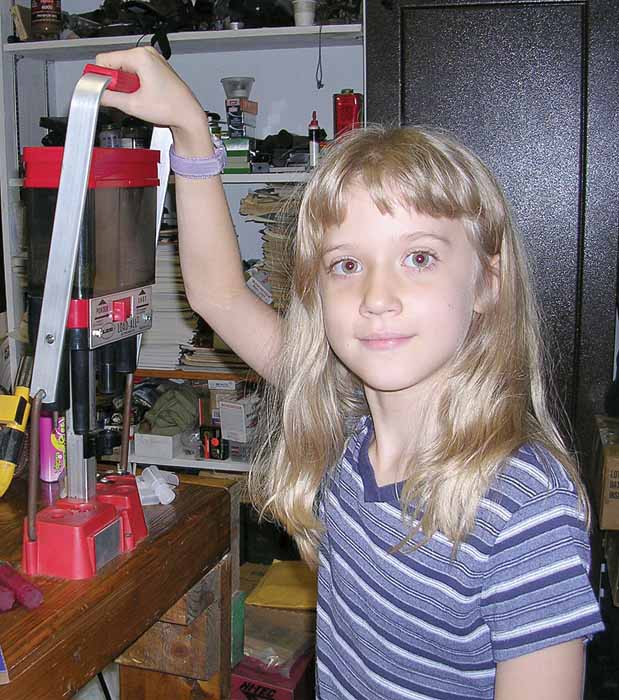
Regular old copper-jacketed BB gun BBs are also readily available and carry quite a punch. Homebuilt rounds charged with BBs used against snakes during the summer months are used to great effect. The ready availability and low cost of generic BBs make these loads excellent medium-range general-purpose rounds.
The Lee shotshell reloader was originally purchased so as to provide a low-cost source of low-recoil shotshells to feed my short-barreled shotguns. It does not take more than a round or three of high velocity buckshot or slugs through a sawed-off 12 bore to peg the fun meter for an afternoon’s shooting excursion. Low-recoil rounds are available on the commercial market but they are relatively expensive and not readily available from local sources. Exotic loadings evolved as a natural progression of having the tools and time at hand.
Actual practical applications of some of these creations take a little imagination. While I can see some reasonable utilization of flechette rounds against mildly armored targets and the piano wire bolo rounds would be utterly devastating if properly deployed in a CQB environment, for the most part quality factory loads would be comparably effective and more consistently reliable in their efficacy. Like most things in this sport you cannot waste too much time asking why we do what we do. More often than not it is simply because it is fun and this pursuit is no exception.

There are some simple rules of thumb to govern home-rolled shotgun loads. Never load anything that might hang in the shotgun shell or harm the shotgun barrels. Never load a payload that is as heavy as a basic low-end charge of birdshot and always keep on the shallow end of the powder charge tables. With these rules in mind as they relate to basic physics, you should never overstress your equipment or push chamber pressures toward anything approaching dangerous levels. This practice also keeps recoil manageable for 12 gauge weapons that are small enough to be holstered. Be forewarned, however, as a physician I have seen some profound injuries that result from the basic and innate urge of the American male to be stupid and exhibit poor judgment. Undertake this pursuit at your own peril and with a full appreciation of the risks involved. While it really is great fun and gets the creative juices flowing to cook up unusual shotgun rounds, shooting is an innately dangerous pursuit and is profoundly intolerant of inattention or foolishness.
Handloading exotic shotgun ammunition is a rewarding and stimulating pursuit for the advanced, seasoned, and conservative shooter. Those who aspire to immortality within the annals of the Darwin Awards or with a penchant for death defiance should stick with the carded fare from their local gun shows. For those experienced scattergunners who want to take their sport to the next level, however, homerolling bizarre rounds can add a whole new dimension to their shooting experience.
| This article first appeared in Small Arms Review V13N12 (September 2010) |












